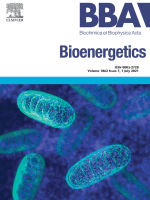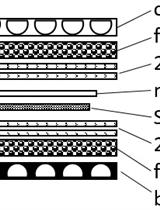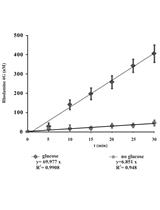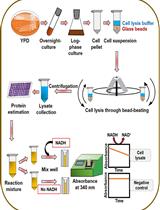- EN - English
- CN - 中文
Isolation of Mitochondria from Ustilago maydis Protoplasts
从黑粉病原生质体中分离线粒体
发布: 2022年01月05日第12卷第1期 DOI: 10.21769/BioProtoc.4277 浏览次数: 3505
评审: Ashish RanjanAnonymous reviewer(s)
Abstract
Ustilago maydis, a basidiomycete that infects Zea mays, is one of the top ten fungal models for studying DNA repair, signal transduction pathways, and dimorphic transitions, among other processes. From a metabolic point of view, U. maydis lacks fermentative capacity, pointing to mitochondria as a key player in central metabolism. Oxidative phosphorylation, synthesis of heme groups, Krebs cycle, β-oxidation of fatty acids, and synthesis of amino acids are some of the processes that take place in mitochondria. Given the importance of this organelle in eukaryotic cells in general, and in fungal cells in particular, we present a protocol for the isolation of U. maydis mitochondria based on the enzymatic disruption of U. maydis cell wall and differential centrifugation. The method can easily be extrapolated to other fungal species, by using appropriate lytic enzymes.
Background
As in other eukaryotes, mitochondria in fungal cells are essential for the production of many important molecules. For example, in the mitochondrial matrix occurs the synthesis of some amino acids and of the heme group that is inserted into specific subunits of the respiratory complexes. Other processes also occur in the mitochondrial matrix, like the β-oxidation of fatty acids and the tricarboxylic acid cycle. NADH and FADH2 are key products of the last two pathways, and these molecules transfer their electrons to the respiratory chain for the synthesis of ATP. Electron transfer and ATP synthesis are connected by a proton electrochemical gradient that is generated by the proton pumping activity of complexes I, III, and IV in the respiratory chain, and consumed by the ATP synthase. Membrane potential and a difference of pH across the inner mitochondrial membrane are components of the proton-motive force. For mitochondria to carry out their functions, transporters located in the outer and inner membranes catalyze the metabolic exchange between cytosol and mitochondria (Sousa et al., 2018; Reyes-Galindo et al., 2019).
U. maydis is a phytopathogen that infects Zea mays. During its life cycle, U. maydis transits through three major morphological stages: the non-pathogenic haploid basidiospore (yeast form), the infective dikaryotic filament, and the environmental resistant teliospore (Brefort et al., 2009). The microorganism is fully respiratory, pointing to mitochondria as a key player in its intermediate metabolism. Therefore, mitochondria isolation is a starting point in studies of respiratory complexes and supercomplexes, the control of ROS production by certain mitochondrial inner membrane proteins, the activities of Krebs cycle enzymes, among others (Juárez et al., 2004). The goal of this protocol is to report a method for the isolation of functional U. maydis mitochondria from protoplasts generated by cell wall lytic enzymes from Trichoderma harzianum. Membrane potential and oxygen consumption were analyzed, to measure the quality of mitochondrial preparations.
Materials and Reagents
Sterile toothpick
Petri dishes (Sigma-Aldrich, catalog number: P5606-400EA)
Glass beaker (Sigma-Aldrich, catalog number: BR90648)
NalgeneTM Polycarbonate Fernbach Culture Flask (Thermo ScientificTM, catalog number: 4105-2800)
Spectrophotometer cuvettes (Merck, catalog number: C5291)
Nalgene® 500 mL centrifuge bottles, wide-mouth with sealing caps style 3141 (Sigma-Aldrich, catalog number: Z353744-4EA)
Polycarbonate tubes, 50 mL, 29 × 102 mm (Thermo Fisher Scientific, catalog number: 03268)
Quartz absorption cuvettes of 3.5 mL (Merck, catalog number: Z803669)
Hamilton syringe (Hamilton, Gastight syringe, catalog number: 1702N)
Round point tip soft paintbrush number 8 to 12 (DUGATO-Amazon)
Distilled water
Sucrose (Sigma-Aldrich, catalog number: S5016)
Glucose (Sigma-Aldrich, catalog number: G8270)
Sorbitol (Sigma-Aldrich, catalog number: S1876)
Select Yeast Extract (Sigma-Aldrich, catalog number: y1625)
Bacteriological Peptone (Sigma-Aldrich, catalog number: PO556)
Agar (Sigma-Aldrich, catalog number: A1296)
Lysing enzymes from Trichoderma harzianum (Sigma-Aldrich, catalog number: L1412)
Dimethyl sulfoxide (DMSO) (Sigma-Aldrich, catalog number: D2650)
(NH4)2SO4 (Sigma-Aldrich, catalog number: A4915)
KH2PO4 (Sigma-Aldrich, catalog number: PO662)
HCl (Sigma-Aldrich, catalog number: H1758)
NaOH (Sigma-Aldrich, catalog number: 795429)
Glycerol (Sigma-Aldrich, catalog number: G5516)
Potassium cyanide (KCN) (Sigma-Aldrich, catalog number: 60178)
Trizma® base (Sigma-Aldrich, catalog number: T1503)
Ethylenediaminetetraacetic acid (EDTA) disodium salt dihydrate (Sigma-Aldrich, catalog number: E9884)
Bovine Serum Albumin (BSA) (Sigma-Aldrich, catalog number: A7030)
Phenylmethylsulfonyl fluoride (PMSF) (Sigma-Aldrich, catalog number: PMSF-RO)
Complete Protease Inhibitor Cocktail Tablets (Roche, catalog number: 04906837001)
Carbonyl cyanide 4-(trifluoromethoxyphenyl) phenylhydrazone (FCCP) (Sigma-Aldrich, catalog number: C2920)
HEPES (4-(2-hydroxyethyl)-1 piperazineethanesulfonic acid) (Sigma-Aldrich, catalog number: H3375)
Safranine (Sigma-Aldrich, catalog number: S2255)
NADH (Sigma-Aldrich, catalog number: N8129)
Sodium succinate dibasic hexahydrate (Sigma-Aldrich, catalog number: S2378)
N,N,N’,N’-Tetramethyl-p-phenylenediamine (TMPD) (Sigma- Aldrich, catalog number: T7394)
Sodium L-ascorbate (Sigma- Aldrich, catalog number: A7631)
Solution A (see Recipes)
Solution B (see Recipes)
Solution C (see Recipes)
PMSF (see Recipes)
Solution D (see Recipes)
Solution E (see Recipes)
YPD-culture media (see Recipes)
Solution F (see Recipes)
FCCP solution (see Recipes)
Safranine solution (see Recipes)
Succinate solution (see Recipes)
Equipment
Teflon stirring rod (FisherbrandTM, catalog number: 14-513-85)
Glass/Teflon Potter Elvehjem homogenizer (Thomas®, catalog number: C917)
UV-Visible spectrophotometer (Thermo ScientificTM, GENESYS 20)
DW-2a-TM UV/Visible spectrophotometer (AmincoTM, Modernized by OLIS, Inc.)
Water bath (PolyScience, constant temperature, basic controller)
Electric drill (Black+Decker)
Thermo Scientific Rotor A27-8 × 50
Thermo Scientific Rotor FiberliteTM F12-6 × 500 LEX
Thermo Scientific Sorvall LYNX 4000 centrifuge (Thermo Fisher Scientific)
High-Speed Refrigerated Microcentrifuge (SCILOGEX, model: D3024R-SCILOGEX)
Magnetic Stirrer (Thermolyne Cimarec 1)
Vortex Mixer (Thermo Scientific, model: M16710-33Q)
Variable autotransformer (Staco Energy Products Co. Model 3PN10108, input 120V 50/60 Hz, Output 0-140V, AMP 1.4 KVA)
Incubator shaker for yeast growth in liquid culture (SEVMEXICO, PRENDO-INO 650V-7)
Biological oxygen monitor, equipped with a Clark type polarographic electrode (COLE-PARMER®, YSI5300A-1)
Ultra-Low Temperature Freezer (RevcoTM, model: ULT1340-3-A36)
Beckman Phi 32 pH Meter
Procedure
文章信息
版权信息
© 2022 The Authors; exclusive licensee Bio-protocol LLC.
如何引用
Pardo, J. P., Guerra-Sánchez, G. , Flores-Herrera, O. and Romero-Aguilar, L. (2022). Isolation of Mitochondria from Ustilago maydis Protoplasts. Bio-protocol 12(1): e4277. DOI: 10.21769/BioProtoc.4277.
分类
微生物学 > 微生物生物化学 > 蛋白质 > 活性
生物化学 > 蛋白质 > 分离和纯化
您对这篇实验方法有问题吗?
在此处发布您的问题,我们将邀请本文作者来回答。同时,我们会将您的问题发布到Bio-protocol Exchange,以便寻求社区成员的帮助。
Share
Bluesky
X
Copy link












